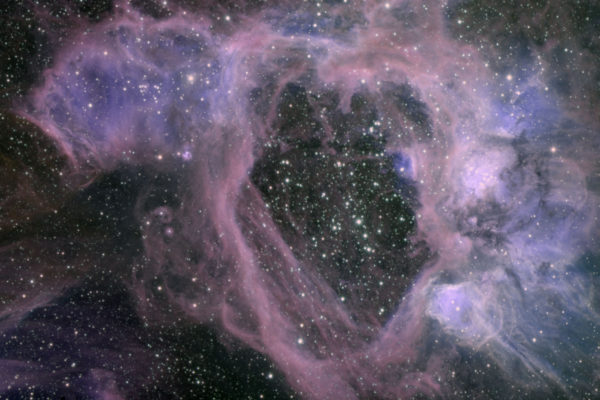Why is radioactive iron raining down on us?
Most of the galactic cosmic rays reaching Earth come from nearby clusters of massive stars, according to new observations from NASA’s ACE spacecraft. The distance between the cosmic rays’ point of origin and Earth is limited by the survival of a radioactive isotope of iron, Fe-60, which has a half life of 2.6 million years. These tiny clocks indicate there was a source within spitting distance of Earth within the past few million years.
Origin of galactic cosmic rays focus of NASA grant
WUSTL astrophysicists have received a five-year, $3,225,740 grant from NASA to design and build Super-TIGER — a Trans-Iron Galactic Element Recorder — to collect rare atomic particles called galactic cosmic rays. Super-TIGER’s first flight is planned for December 2012.
Origin of galactic cosmic rays focus of NASA grant
Courtesy photoW. Robert Binns and TIGER prelaunch in AntarcticaAstrophysicists at Washington University in St. Louis have received a five-year, $3,225,740 grant from the National Aeronautics and Space Administration to design and build Super-TIGER — a Trans-Iron Galactic Element Recorder — and then fly it aboard a high-altitude balloon over Antarctica to collect rare atomic particles called galactic cosmic rays. Super-TIGER’s first flight in search of the origin of cosmic rays is planned for December 2012.
Obituary: Cosmic-ray astrophysicist Klarmann; 78
A member of WUSTL’s cosmic ray research group, he was involved in some of the world’s most successful studies of the composition of galactic cosmic rays.
Astrophysicist Joseph Klarmann dies at 78
KlarmannCosmic-ray astrophysicist Joseph Klarmann, Ph.D., a professor emeritus of physics in Arts & Sciences at Washington University in St. Louis, died Tuesday, Feb. 21, 2006, at St. Mary’s Health Center in Richmond Heights, Mo., of complications from a bicycle accident in Forest Park last September. He was 78.

